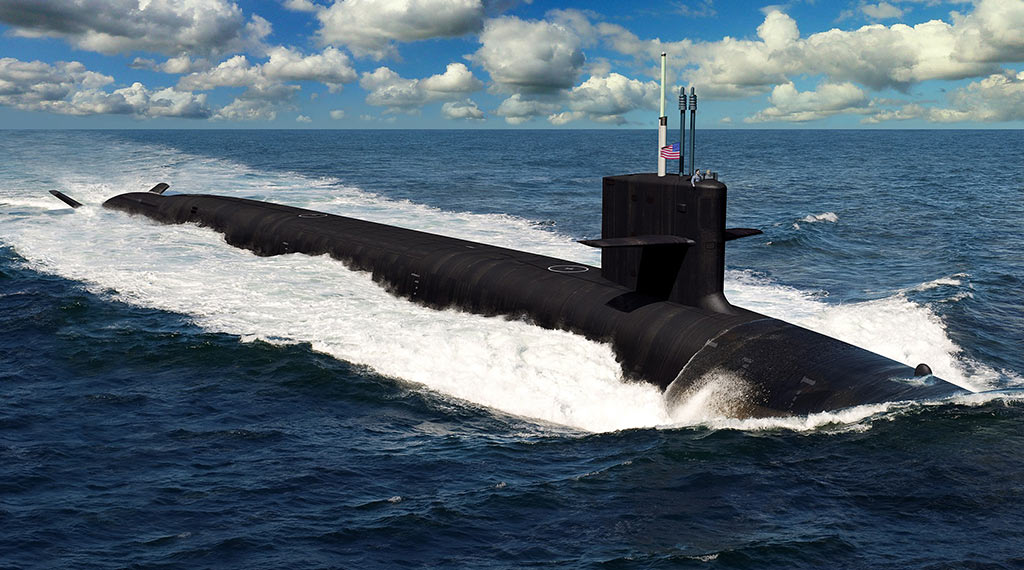
Will the Columbia-Class Submarine Be Ready On Time? The U.S. Navy’s goal to receive its incoming Columbia-class ballistic missile submarines in record time may not come to fruition, according to a government watchdog agency.
In the Government Accountability Office’s report released last month, a lack of statistical analysis for the vessel is the culprit for the potential delay. Additionally, issues involving the submarine’s design, materials, and quality could be impacting its entry into service.
The impending USS Columbia class is set to replace the 14 existing Ohio-class nuclear-powered submarines that are inching toward the end of their service lives.
Although the Navy hoped that the production timeline of the new submarines could be achieved in a record-breaking 78 months, this feat may not be possible.
Columbia-Class: Why the new class of subs remains a priority for the Navy
Designed to take over the role of submarine presence in the United States’ nuclear force, the Columbia-class vessels are a top priority for the Navy.
The service is planning to develop and purchase 12 Columbia-class boats for a whopping $132 billion.
While the price tag seems high, this advanced class of vessels will make up the largest and most complex submarines in history. The submarines will be 560 feet in length and displace nearly 21,000 tons.
Significantly, its reactor will not need to be refueled during its planned lifetime service, making the submarine more cost-effective in the long run.
The U.S. Navy collaborated with industry partner General Dynamics Electric Boat back in 2007, when the Columbia-class’ initial designs were conceptualized. Another shipbuilder- Huntington Ingalls Industries Newport News Shipbuilding- was also awarded contracts for the design and construction of the submarine class, serving as Electric Boats major subcontractor.
In December, General Dynamics was awarded a $5.1 billion modification of the previously awarded Columbia Integrated Product and Process Development Contract.
According to Naval-Technology, the incoming Columbia-class of submarines will initially carry 16 D5 nuclear missiles each, totaling to about 70% of the U.S. nuclear triad. From boat nine onwards, an upgraded D5LE2 ballistic missile will be installed.
In addition to these missiles, the Columbia-class vessels will sport Mk 48 torpedoes and enhanced acoustic performance. Combined with the top-of-the-line sensors the submarines are expected to feature, the boats will sail quietly making them extremely difficult for adversaries to detect.
While a ceremony this summer indicated progress was being made…
In June, Electric Boat conducted a keel laying ceremony for the first Columbia-class submarine to be constructed – the USS District of Columbia (SSBN 826).
In this tradition, the initials of the submarine’s sponsor are welded onto a section of the vessel.
The Secretary of the Navy Carlos Del Toro explained the significance of this new advanced class of submarines during the ceremony: “Potential adversaries know the silent service is on patrol at this very moment, but they don’t know where and that protects us all,” adding that “The venerable Ohio-class that has guarded us for decades is nearing the end of its service life. For the safety of our Sailors, and the security of our world, we must modernize our fleet, and our nuclear command, control, and communications systems.”
…The GOA laid out potential setbacks
The Columbia-class’ progress in development could be stunted, however, according to the GOA report. The watchdog agency laid out six recommendations as part of its findings, including that the Navy carry out a schedule-risk analysis and update long-term plans.
An extended delay in introducing the first Columbia-class vessel into service could create a dangerous gap as its Ohio-class predecessors will be ending their service life beginning in 2027.
- Iran’s Growing Missile Arsenal Is a Challenge for Israel - November 18, 2025
- IAI Is Hoping to Secure a Contract for the “Golden Dome” - November 3, 2025
- Trump dispatches B-1 bombers and other military assets to Venezuela - October 28, 2025
